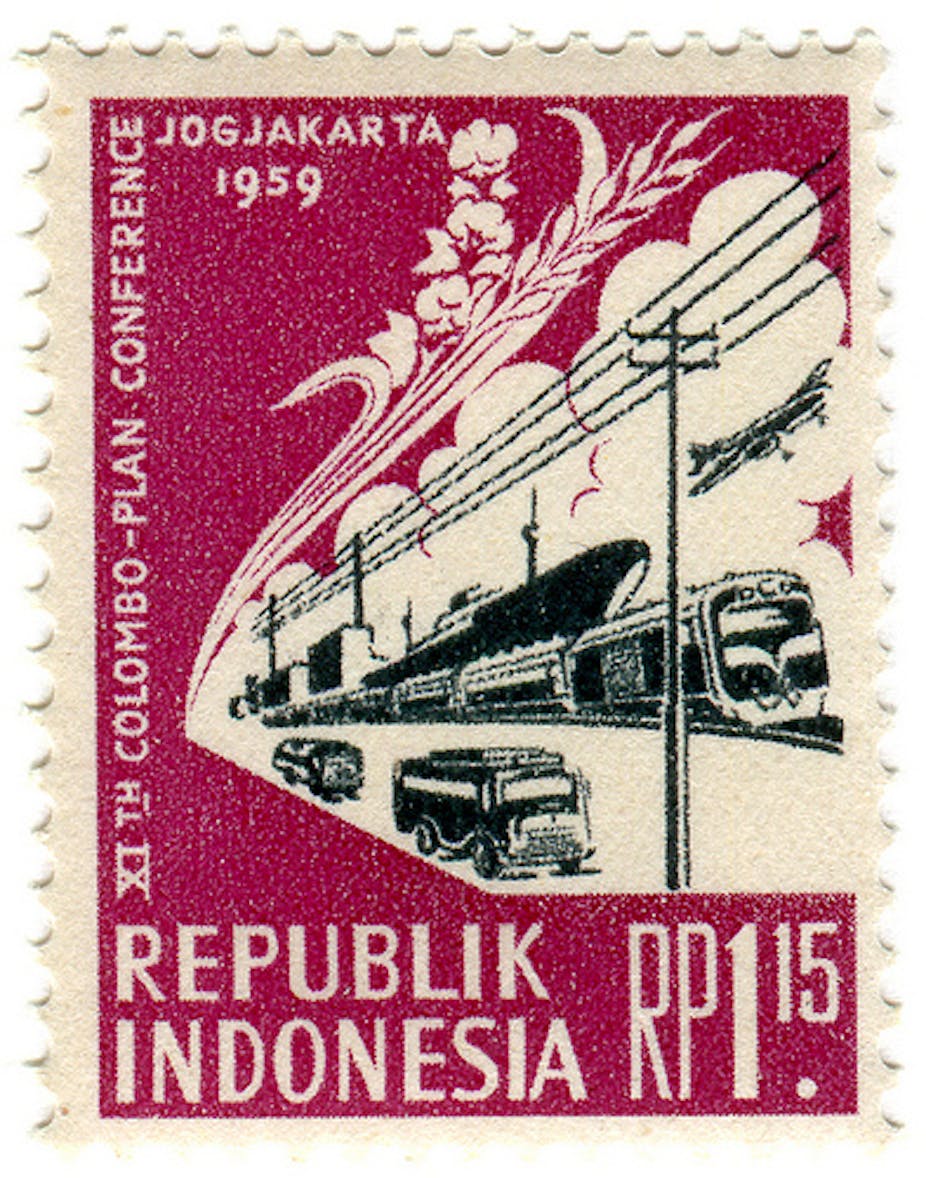AUSTRALIA IN ASIA: In the sixth part of our series, David Lowe of Deakin University examines an education project which brought us closer to our Asian neighbours.
The Colombo Plan for aid to South and Southeast Asia, remembered mostly for the Asian students sponsored in Australian training and degree programs, matters greatly to Australia.
Launched in 1951 and continuing today in much-diminished form, it is regularly invoked in Australia as a pioneering and progressive project through which closer understanding and engagement with Asia was achieved.
Reviving an old idea
In 1996 Australian Foreign Minister Alexander Downer made the Colombo Plan a central plank of his effort to sketch what he called a “Casey” tradition in Australian foreign policy – Australia’s involvement in the Colombo Plan during the 1950s under Richard Casey’s leadership as Minister for External Affairs epitomising his efforts to build relationships with Asian nations.
The Colombo Plan appeared in the press again in 1998 as the benchmark of what good might yet be achieved again when the Australian government was contemplating a new group of youth recruits to lead aid projects in Asia, akin to a peace corps.
Australians enjoyed a further outing for the Colombo Plan also in 2001 when their government joined the World Bank in launching a new, communications-based “Virtual Colombo Plan” for the underdeveloped world; and it has occasionally been recalled nostalgically, especially in the wake of acts of violence directed at Asian students in Australia, as evidence of Australians being able to look after Asian students.
It worked
As an act of humanitarian or cultural liberalism, it should be viewed as a success.
By 1985, some 20,000 students had been trained under the Colombo Plan, and the great many more students who had arrived as private students had been partly wrapped up in a progressive story of Australia’s engagement with Asia in an era, at least up to the mid-1970s, of fences built between Australia and Asia: membership of Cold War alliances with the United States and others shielding them from communism in Asia; anxiety about the pace of decolonisation and post-colonial governments to Australia’s north; and the persistence of Australia’s restrictive immigration or “White Australia” policy.
Even more hard-headedly, it seems that Australia’s contributions, although laced with odd doses of imperialism and Cold War politics, represented value for money: for relatively small outlays, the Australians crept their way towards more flexible understandings of social, cultural and economic forms of engagement with Asia and when policy towards Colombo Plan students and private international students began to merge in the second half of the 1960s, this hastened the rapid dismantling of Australia’s White Australia policy.
The changing student make up
This is not the place to outline policy changes relating to international students from the late 1970s through mid-1980s. But they accompanied Australia’s embrace, then debate, of multiculturalism, a rethinking of Australia’s overseas aid programs, and the economic reforms leading to Australia’s closer integration with the world economy.
They form a logical backdrop to the introduction of full fees for overseas students in Australian tertiary institutions from the mid-1980s.
In the transition period, as higher numbers of fee-paying students, mostly from Asia, grew in the late 1980s, those Vice-Chancellors familiar with the Colombo Plan were uneasy about whether the market-driven approach would cater for particular needs in Asia or overcome the logic of requited subsidies for particular courses.
But for a short time at least, the income was an extra component in budgets rather than something they depended on.
Learning from our mistakes
As is well-known, this changed in the 1990s, as cuts or lack of indexation impacted on tertiary budgets.
Thus developed a profound disconnect in the story of Asian students in Australia. The needle on the record skipped from what was a tune of progressive, cautious engagement, if tinged with caution and other lingering agendas, to a discordant one seen through financial lenses.
The shocks resulting from the violence experienced by Indian students in 2009-10 are still being felt, but we hope for a new era in the wake of the Government’s endorsement of reforms that emerged recently in the Knight Review.
I hope that reflections in the wake of these shocks also provide the chance to recover some features of the Colombo Plan’s narrative.
As commentators such as the Lowy Institute’s Michael Wesley are urging, now more than ever before, is the time for next-generation Asia-literacy; now, Australia unavoidably implicated in the rise of Asia, is the time for stories of multi-dimensional engagement based on a breadth of human interactions and longer-term connections.
Education of both Australians and Asians can, and should, have a big role to play.
This is the sixth part of our Australia in Asia series. To read the other parts, follow these links:
- Part one: Is Australia ready for the “Asian Century”
- Part two: Australia in Asia: How to keep the peace and ensure regional security
- Part three: The lucky, lazy country shows how not to win friends in Asia
- Part four: How Australian aid in Asia can benefit those at home
- Part five: Learning to live in the Asian Century
- Part six: Colombo plan: An initiative that brought Australia and Asia together
- Part seven: Why Australia’s trade relationship with China remains at ground level
- Part eight: Finding the balance between India and China in the Asian ‘concert of powers’

